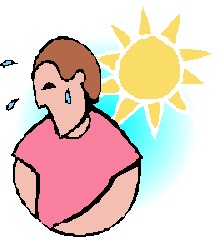The Single Temperature Stop-Work Challenge.
- By Ross Di Corleto
- 25/04/2018
- 4 Comments
 In the Brisbane Coroner’s Court in 2016, following the investigation of a heat stress related fatality, included in the Coroner’s recommendation was the following:
In the Brisbane Coroner’s Court in 2016, following the investigation of a heat stress related fatality, included in the Coroner’s recommendation was the following:
“I recommend that any future industry-wide code of practice should be based on a quantitative assessment of climate, including an ultimate cut-off temperature at which work must cease.…….”
The first part of the recommendation, a quantitative assessment of climate, is something that OHS professionals have been promoting for many years and should be a standard component of any heat stress management programme. However, how achievable is the second part,
“an ultimate cut-off temperature at which work must cease.…….”
The issue is that there are numerous factors that need to be considered in the assessment of the impact of a thermal environment.
Firstly, there are the many variables associated with the environment,
- Air temperature,
- Humidity,
- Air velocity,
- Radiant heat (both solar and from surfaces)
- Clothing being worn
- Level of PPE being used
Then there is the task itself, what level of metabolic load does it impose on the individual? The internal heat generated by an individual recording information on a clipboard is not going to generate the same level as a labourer using a jackhammer or digging a trench.
What about the individual? We will need to consider:
- Level of acclimatization
- Medications and Drugs (prescription or otherwise) being used
- General health & fitness
- Hydration state
- Age
Finally let us not forget the pressures of ensuring that production targets or delivery of a commercial product are met. Often unspoken but can have significant influence on decisions made.
How does one ascribe a single cut off temperature when there are all these variables to consider?
What about heat stress indices?
(for more detail you can review the heat stress index post from 2015)
The ideal heat stress assessment method will need to consider all aspects of heat generation inside the body and the transfer of heat with the work environment.
But which one, over the last 70+ years there have been over 100 different climatic heat stress indices developed.
Whilst some of the more modern rational indices can address many of the environmental and task variations none can address all the individual aspects. None of these can consider all the personal factors. If you read the fine print for the vast majority of heat stress indicies they usually have been developed and tested using healthy fit individuals.
Is this really the case in our current workforce?
Heat stress indices allow the integration of many parameters into one figure but even they cannot account for all scenarios. They cannot guarantee a safe/unsafe limit under all conditions.
Interestingly we still see some industries and sporting bodies relying on a single temperature to manage heat exposure. Why, usually because it is a simple and easy approach and readily managed. But the question remains, is it really protecting those that need protecting? Probably not.
There is a solution and it is not difficult, but it relies on a better understanding of the interrelationship of all the varying contributing factors and not just an air temperature. This needs to be understood by all involved, those exposed and leadership and an acceptance that when it comes to managing heat stress one size does not fit all. Address each risk based on the assessment of the relevant information. It may not be the same solution for each scenario, but the core concepts and controls remain the same.
Attached is a presentation on this topic from the 2017 AIOH annual conference in Canberra which presents some scenarios to add some additional examples of this complexity.
Is the Coroner’s recommendation achievable?
If we are looking for a single temperature to stop work which will protect all individuals and not drive industry and sport to a grinding halt, then I would say no.
I believe there is no such silver bullet.
 Copyright © 2024
Copyright © 2024
Hi Ross,
As usual, always great to read your thoughts and how you verbalise this complex issue. I think you sum up your points effectively in the last line of your discussion – unfortunately there is no silver bullet.
Thanks,
Steve
Thanks Steve
Great insight, thanks Ross.
Thanks Lee